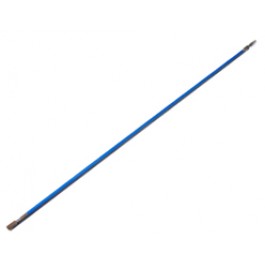

Hold the guitar with the truss rod’s adjusting nut facing you and the neck pointing away from you. While the location of the truss rod nut may vary from one guitar to another, the method of adjusting it is always the same and very simple. See my post “ Your Own Personal Fretbuzz” for a more in-depth discussion. Factory settings, or your favourite guitar player’s setup specs, are only a guide and may not suit you. It is important to realise that our own unique playing style and picking has a big influence on how much neck relief is required. The condition of the frets also has an influence on neck relief – worn frets or poor fret work will result in inconsistent fret height up and down the neck, which may need more relief and/or string height to avoid string buzz in some playing positions. some country or slide players who also prefer high action). Some people prefer a perfectly straight neck while some people like a lot of relief (e.g. Failing that, a standard business card is about 0.3 mm (0.012″) and can be a useful guide – if the card fits easily between the string and the fret with contact perhaps reduce the relief slightly, as most players won’t need any more neck relief than that.ĭespite what many people will tell you, there is no right or wrong where neck relief is concerned, provided there is no excessive string buzz. If you don’t have feeler gauges, you can use short cuttings from a 9, 10, 11, and 12 gauge strings (Tip: bend the string piece into a U-shape and glue it to a lollipop stick or piece of wood to make a handy re-useable gauge). Factory specification for most of the major guitar manufacturers will fall within this range, for most players 0.2 mm to 0.35 mm gap (0.008″ – 0.014″) will work just fine. no relief) up to about 0.5 mm gap (.020″). Keeping the string pressed to the body fret, use the feeler gauges to to measure the size of that gap where it is largest, which is usually at the 7th or 8th fret.įor reference, an acceptable range of neck relief runs from almost dead flat (i.e. If there is any forward bow in the neck, there will be a small gap between the string and the frets. Then press the low E-string down at the fret closest to the neck/body joint (sometimes called the “body fret”, usually around the 15th or 17th fret, depending on the guitar). Use the capo to hold the strings down at the 1st fret. Do not lie the guitar on its back (I’ll explain why in another post all about gravity). Start with the guitar tuned to pitch and hold it in its normal playing position. To accurately measure neck relief, you’ll need a capo and feeler gauges. With too much neck relief can raise the string height over the middle of the guitar neck, which if compensated by lowering the saddles, could result in buzzing on the highest frets.

If neck relief is too low or flat, we risk buzzing, particularly on the lower frets. That unwanted contact with frets causes a stinging or buzzing noise (sometimes called “ fret buzz” or “ string buzz“). By tightening or loosening the adjusting screw of the truss rod, we can adjust the amount of neck relief, which helps us to avoid fret buzz without the strings being unnecessarily far from the neck. Without neck relief the strings may not vibrate freely without making contact with other frets. Note: this is the geographical definition of “relief” as “difference in height from surroundings”, not relief as in “relaxed” or “relieved of stress”). (Click for bigger image)Īt the low string heights favoured by modern guitar and bass players, a small amount of forward bow is useful. This forward bow is known as “ neck relief“. Guitar neck cross-section showing the truss rod (red), with the anchor (yellow) at the heel and the adjustment nut (blue) at the headstock. This causes the truss rod to try to straighten within the curved channel, pushing the middle of the neck upwards and bending the neck backwards, countering the forward pull of the strings. When we tighten the adjusting nut, the truss rod is pulled by the nut, putting it under tension. The truss rod can be adjusted with an adjusting screw or nut located either at the headstock or the body end of the neck. Without a trussrod, the headstock would be pulled forward, bowing the neck and affecting string height and playing comfort. Its purpose is to help counteract the forces on the neck from the tension of steel strings. The truss rod is a thin steel rod fitted into a curved channel within the neck of electric and acoustic steel-stringed guitars and basses (see the diagram below). But truss rods are very simple devices and are nothing to be afraid of. For years we have been told that we can ruin our precious and fragile guitars by just looking at them funny. No single part of a guitar is more terrifying or mysterious to many guitarists than the humble truss rod.


 0 kommentar(er)
0 kommentar(er)
